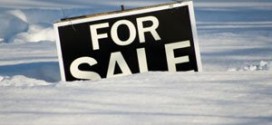Home prices nationwide rose by 6.5 percent in June, the 40th straight month of year-over-year increases, and will keep on rising by 4.5 percent through June 2016, CoreLogic said today. On a month-over-month basis, home prices nationwide, including distressed sales, increased by 1.7 percent in June 2015 compared with May 2015.
The national average price on the CoreLogic index is now 7.4 percent below its peak price in April 2006. In June, some 35 states and the District of Columbia reached or exceeded 10 percent of their peak prices. Fifteen states and the District of Columbia reached new price peaks—Alaska, Arkansas, Colorado, Hawaii, Iowa, Kentucky, Nebraska, New York, North Carolina, North Dakota, Oklahoma, South Dakota, Tennessee, Texas and Wyoming. The CoreLogic HPI begins in January 1976.
The CoreLogic HPI Forecast indicates that home prices, including distressed sales, are projected to increase by 0.6 percent month over month from June 2015 to July 2015 and by 4.5 percent** on a year-over-year basis from June 2015 to June 2016. Excluding distressed sales, home prices are projected to increase by 0.5 percent month over month from June 2015 to July 2015 and by 4.2 percent** year over year from June 2015 to June 2016. The CoreLogic HPI Forecast is a projection of home prices using the CoreLogic HPI and other economic variables. Values are derived from state-level forecasts by weighting indices according to the number of owner-occupied households for each state.
“The tightness of the for-sale inventory varies across cities. Throughout the U.S., the months’ supply was 4.8 months in the CoreLogic home-listing data for June, but varied greatly across cities. In San Jose and Denver, there was only 1.6 months’ supply of homes on the market, whereas Philadelphia had a 7 months’ supply and Providence had a 6.6 months’ supply,” said Frank Nothaft, chief economist for CoreLogic. “The stronger appreciation was registered in cities with limited inventory and strong homebuyer activity, such as San Jose and Denver.”
“The current cycle of home price appreciation is closing in on its fourth year with no apparent end in sight,” said Anand Nallathambi, president and CEO of CoreLogic. “Pent-up buying demand and affordability, together with higher consumer confidence buoyed by a more robust labor market, are a potent mix fueling a 6.5 percent jump in home prices through June with more increases likely to come.”
Highlights as of June 2015:
- Including distressed sales, the five states with the highest home price appreciation were: Colorado (+9.8 percent), Washington (+8.9 percent), New York (+8.3 percent), South Carolina (+8 percent) and Nevada (+8 percent).
- Excluding distressed sales, the five states with the highest home price appreciation were: Colorado (+9.3 percent), New York (+8.5 percent), Washington (+8.3 percent), Oregon (+8.2 percent) and Nevada (+7.9 percent).
- Including distressed sales, only four states experienced home price depreciation: Massachusetts (-5 percent), Connecticut (-0.6 percent), Louisiana (-0.4 percent) and Mississippi (-0.3 percent).
- Including distressed transactions, the peak-to-current change in the national HPI (from April 2006 to June 2015) was -7.4 percent. Excluding distressed transactions, the peak-to-current change for the same period was -4 percent.
- The five states with the largest peak-to-current declines, including distressed transactions, were: Nevada (-32.2 percent), Florida (-28.7 percent), Rhode Island (-26.5 percent), Arizona (-25.8 percent) and Maryland (-21.2 percent).
- Of the top 100 Core Based Statistical Areas (CBSAs) measured by population, 93 showed year-over-year increases. The seven CBSAs that showed year-over-year declines were: Baltimore-Columbia-Towson, MD (-8 percent); Boston, MA (-4.4 percent); Camden, NJ (-0.5); Hartford-West Hartford-East Hartford, CT (-0.1 percent); New Haven-Milford, CT (-1.8); New Orleans-Metairie, LA (-6.1 percent) and Worcester, MA-CT (-7 percent).
**The forecast accuracy represents a 95-percent statistical confidence interval with a +/- 2.0 percent margin of error for the index including distressed sales and a +/- 2.0 percent margin of error for the index excluding distressed sales.
 RealEstateEconomyWatch.com Insight and Intelligence on Residential Real Estate
RealEstateEconomyWatch.com Insight and Intelligence on Residential Real Estate


